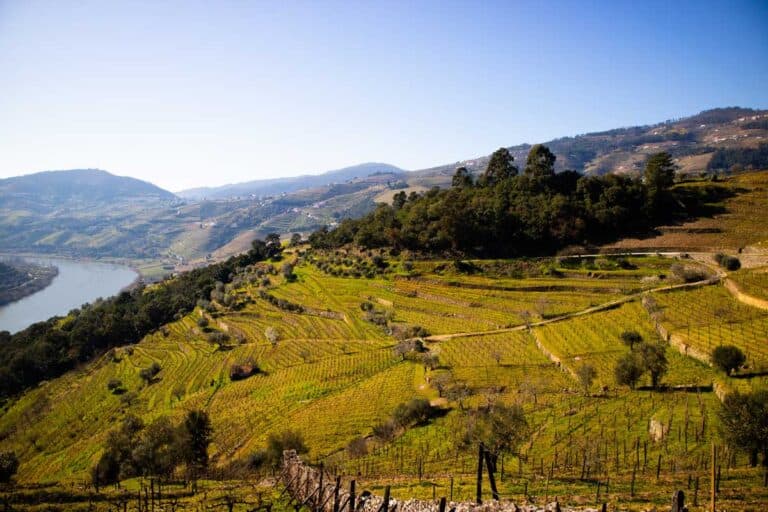
Editor’s Note: We’re all dreaming of travel ahead. Here’s some inspiration for future adventures. We share places, products and activities we recommend. If you make a purchase using a link on our site, we may earn a commission.
The instruction is to “Enter the village ONLY TO THE FOOD COFFEE IN PARADA-BEAUTIFUL”. We have no idea what that means.
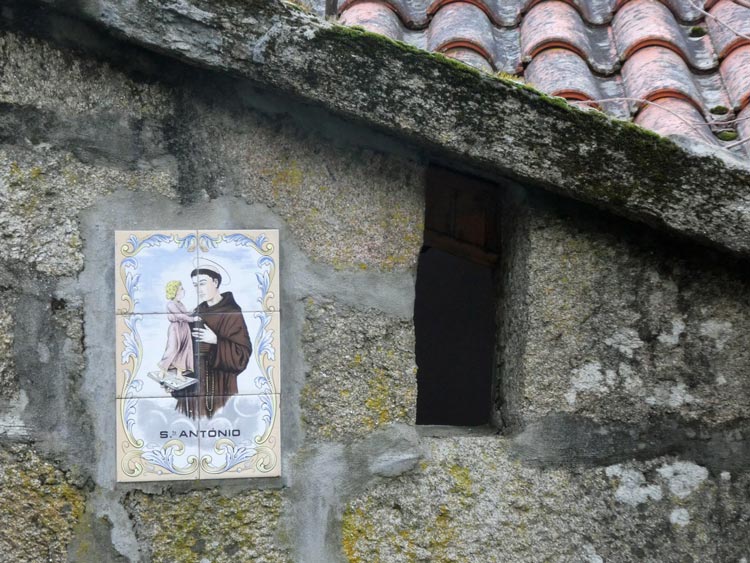
Peneda-Gerês National Park
We’re heading for Lindoso, in the Peneda-Gerês National Park in Portugal’s far north. In these parts, accommodation is limited to “local lodgings” offered by enterprising villagers.
Our host, Adèrito, speaks not a word of English – about on par with our knowledge of Portuguese – so we’ve been communicating via Google-translated e-mail. Evidently not ideal.
An hour north of Porto we turn right and leave the coast behind. Another hour and just as we begin to wonder whether we’ve come too far, a “Welcome to Spain” sign confirms it.
Frustrated, we turn the car around and trek back along the way we’ve come, searching for somewhere serving FOOD COFFEE. Eventually, we spot Café Mó. Though it looks deserted, we stop the car and wander over. Around a corner, we find a couple of men sitting in the shade drinking beers.
“Hello. We’re looking for Adèrito.”
Our host had suggested if we got lost to simply ask someone, which might have worked had we spoken Portuguese. It’s clear from the blank looks on these men’s faces that a different approach is required.
I pull out my phone and show them Adèrito’s name. The penny drops and an animated discussion begins. It seems each man has a different view as to our hosts’ likely whereabouts.
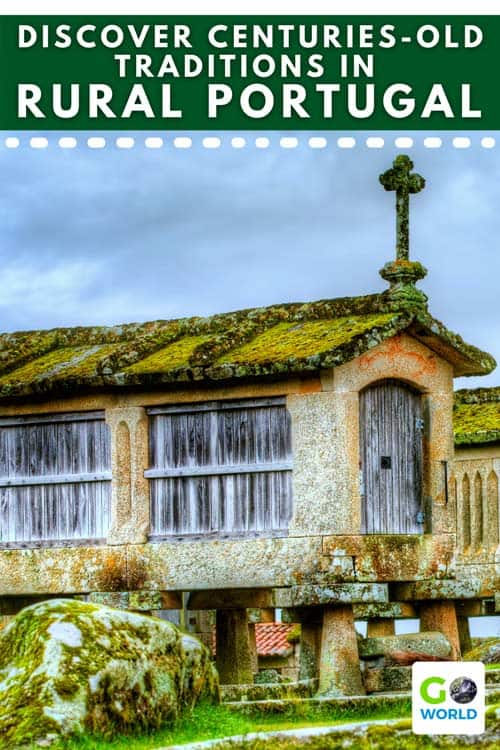
Waiting for Aderito
As one man gestured toward a group of houses tucked into the hillside across the road, the other grabbed his phone out from a pocket of his overalls and starts dialing. Meanwhile, the owner of the establishment appears, drying her hands on an apron and adding her opinion as to where our host might be.
The man with the phone raises a hand. There’s a pause as we all wait for Adèrito to answer. He doesn’t.
The discussion continues until the woman turns to us. “Don’t worry,” she says, “he’ll go find Adèrito.” Or words to that effect. The younger man jumps on a motorbike, helmet slung over one arm, speeds off across the road and disappears up a narrow lane in a cloud of dust. Again, we wait.
Before long we hear the sound of the bike’s return. Our rescue rider skids around the corner at the top of the lane then slides sideways to a halt and motions for us to follow him. We hesitate. The others urge us on.
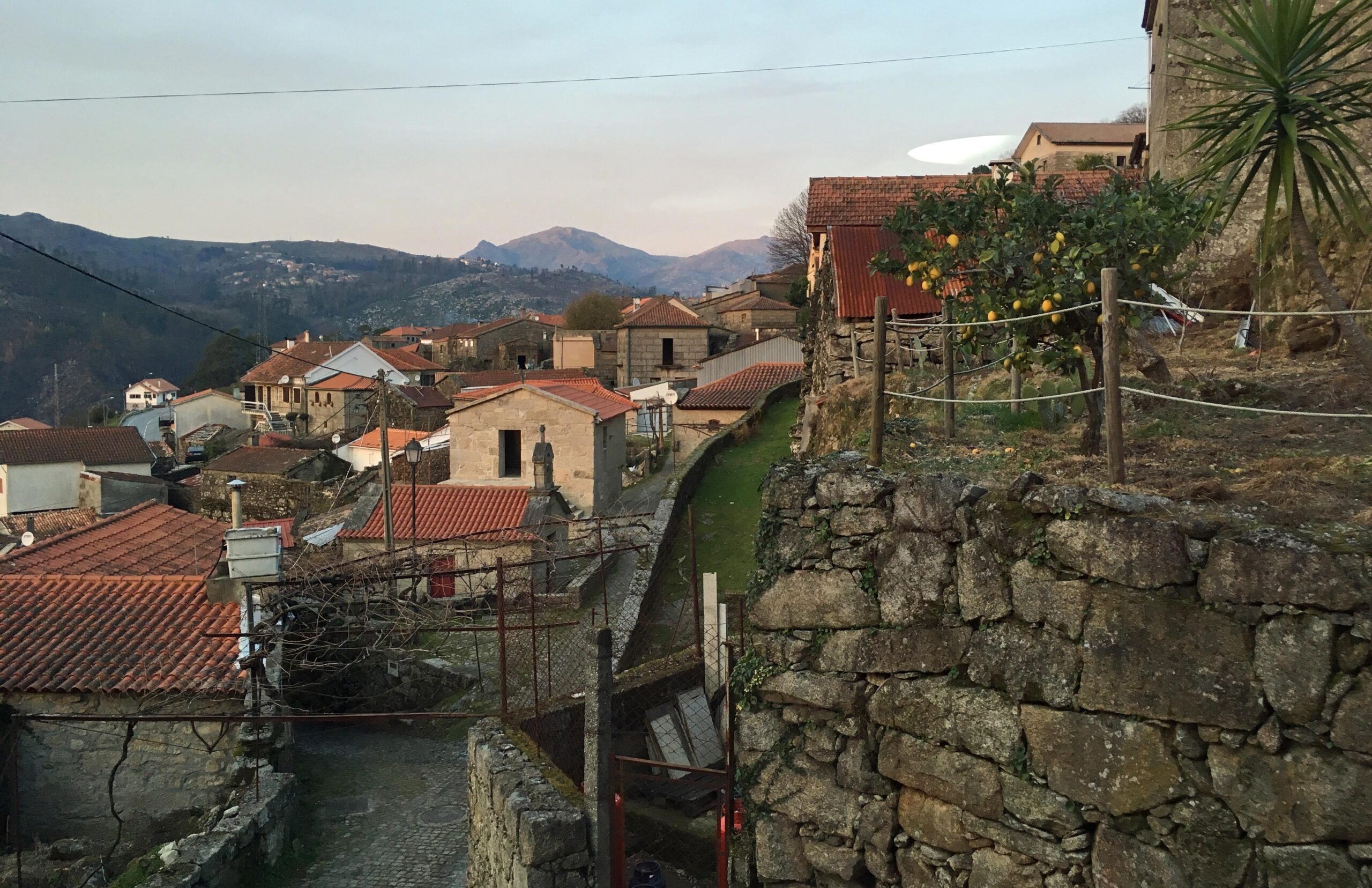
“You go. Follow him.”
“Really? Up there?”
“Yes. You go.”
We jump in the car and follow the bike up into the rural village. After a short trip that includes a few heart-stopping moments and a couple of near-sideswipe experiences, we arrive at Casa dos Pintos. And there is Adèrito, with a big smile, ushering us out of the car and into space under the house.
“Come, come,” he calls. We get the gist without having to resort to Google translate. “This is for you.”
Our host passes each of us a small soup bowl filled with red wine. It is a “welcome” drink, Adèrito’s own vintage, poured straight from the vat, made from the fruit of the vines growing right outside.
The wine is good – at least the equal of any of the good house wines we’ve been drinking by the liter on our travels through rural Portugal. It turns out we’re in the village of rural Parada. It’s close to Lindoso, which we later learn means “beautiful” in English. And Café Mó does serve very good food and coffee.
All of which adds up to make the instruction, “Enter the village ONLY TO THE FOOD COFFEE IN PARADA-BEAUTIFUL,” very clear indeed. Why didn’t we get that the first time?
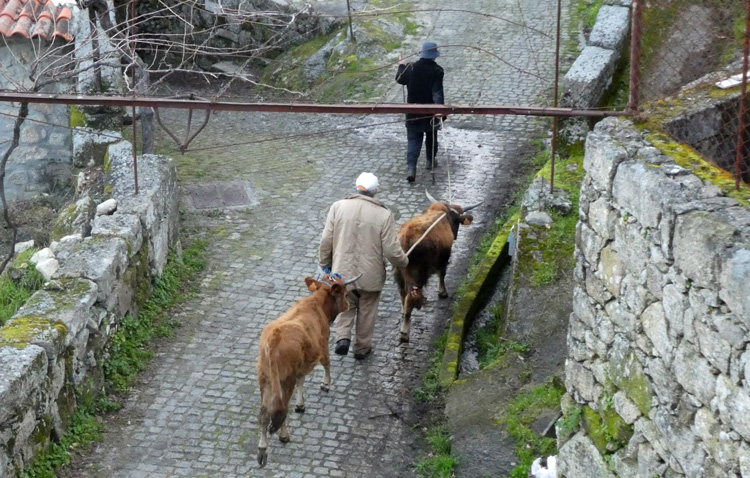
RURAL LIFE IN PARADA
Both Parada and Lindoso are in Portugal’s Alto Minho region, inside the national park. Parada is a collection of around 50 houses – traditional stone buildings topped with red terracotta tiles – set into the hillside. But this is no ordered collection; it’s a jumble of shapes and sizes crammed into submission as the community grew.
A winding, narrow lane passes through the village. Scarcely wide enough for a vehicle, the lane is as much stock route as a street. Each morning villagers walk their few head of sheep or cattle along the lane to pastures on the edge of town.
The farmers’ quiet whistles and the clack of hooves on stone announce they are coming. There’s a rhythm to life in rural Parada.
Centuries-old traditions have changed little; well-tended gardens produce vegetables according to the season, the communal wash house – built in 1904 – is still in use, and you might even spot a team of oxen hauling an old wooden cart.
Religion remains an important part of life here; the Portuguese-born St. Anthony is revered and his image hangs above the entrance to many houses in the village.
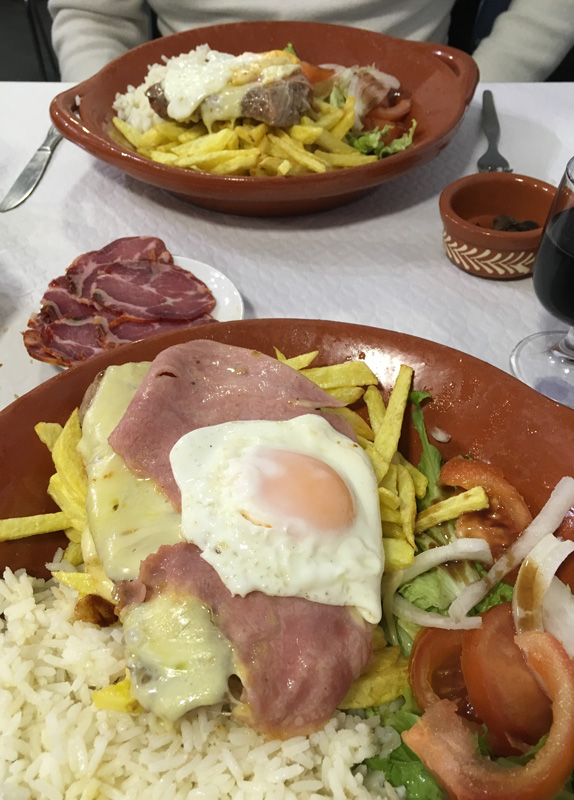
CAFÉ MÓ in Parada
There are no shops in Parada – apart from Café Mó. If you arrive without supplies, it’s the only place to eat. Café Mó also serves as a kind of community hub where locals gather to share a meal and catch up with friends.
Most evenings the place is full to overflowing. People call greetings across the room, groups of men play cards and drink the local Vinho Verde, and parents swap news as their children race between tables. It feels like a party and newcomers are welcomed.
The menu at Café Mó is simple – meat or fish. Either choice is preceded by plates of delicious cured meats, olives, olive oil and bread.
The meat course is the traditional Portuguese dish Bife com Ovo a Cavalo – literally eggs riding atop grilled steak. It arrives with rice, beans, fried potatoes, salad and melted cheese. Suffice to say no one leaves Café Mó hungry.

THE GRANARIES of Rural Portugal
We’ve come to the Alto Minho region in search of 18th and 19th century stone granaries – espigueiros. The small, raised structures were used for drying and storing maize.
Low stone columns, capped to deter rodents, support a rectangular slab of granite. Above the slab, vertical walls of timber or stone include narrow gaps to facilitate airflow.
Pitched stone roofs were often topped with a cross – a silent prayer for the protection of the grain. The groups of communal granaries look, at first glance, like cemeteries of mini-mausoleums.
Lindoso has the largest collection of granaries, though they can be found in most of the local villages. Many have been restored and some are still used for drying and storing grain.

CASTELO DO LINDOSO
Some 500 years before the first granaries appeared in Lindoso, a military fortress existed on the high ground above the rural village. Close to the Spanish border, Castelo do Lindoso has always been strategically important to the Portuguese.
The castle’s 17th-century walls and watchtowers are still in place, and there’s a small exhibition providing information about the castle’s history and the surrounding national park.
PENEDA-GERÊS NATIONAL PARK
The Peneda-Gerês National Park is named for two of the mountain ranges included in its 72,000 hectares (about 178,000 acres). Designated only in 1971, the park’s charter is to balance the conservation of natural resources with access for those who want to enjoy them.
Here you’ll find forests of cypress and oak, cascading waterfalls, clear rock pools, and rivers flowing into large reservoirs. If you’re feeling energetic there’s plenty to do – hiking, biking, paddling and swimming are popular activities.
If not, the option of immersing yourself in the living history of local villages is definitely a good alternative.

IF YOU GO
Parada is about a 1½-hour drive northeast of Porto. It is possible to get there via a series of connecting buses, but once you’re in the national park you’ll want your own vehicle, so driving is a better option. And remember to bring cash – you’ll need it; in this part of rural Portugal, the nearest ATM is in Spain.
Contact Adèrito – http://casadocharco.com/web/index.php/contactos
Other accommodation – http://www.turismodealdeia.com/EN/index.php
Visit Castelo do Lindoso – https://www.visitportugal.com/en/NR/exeres/28AEAB9D-3186-43B4-83A8-5071989800C5
Peneda-Gerês National Park – https://www.visitportugal.com/en/node/73747
Find flights, ground transportation discounts and hotel options with CheapOair. They have the trusted flight deals to make your trip easy at an affordable price. Plan your flight to Portugal and more here.
Author’s Bio: Gayle Neighbour lives mostly in Brisbane, Australia, and elsewhere as often as possible. She writes and travels for pleasure, seeking out new destinations and cultures. She believes that the journey is the goal, and people always make the difference.
- Why the Kimberley Should Be Your Next Australian Adventure - July 5, 2025
- How We Finally Afforded Our Dream Trip to the Swiss Alps (And You Can Too) - July 5, 2025
- Escape Manhattan for Governors Island - July 5, 2025

